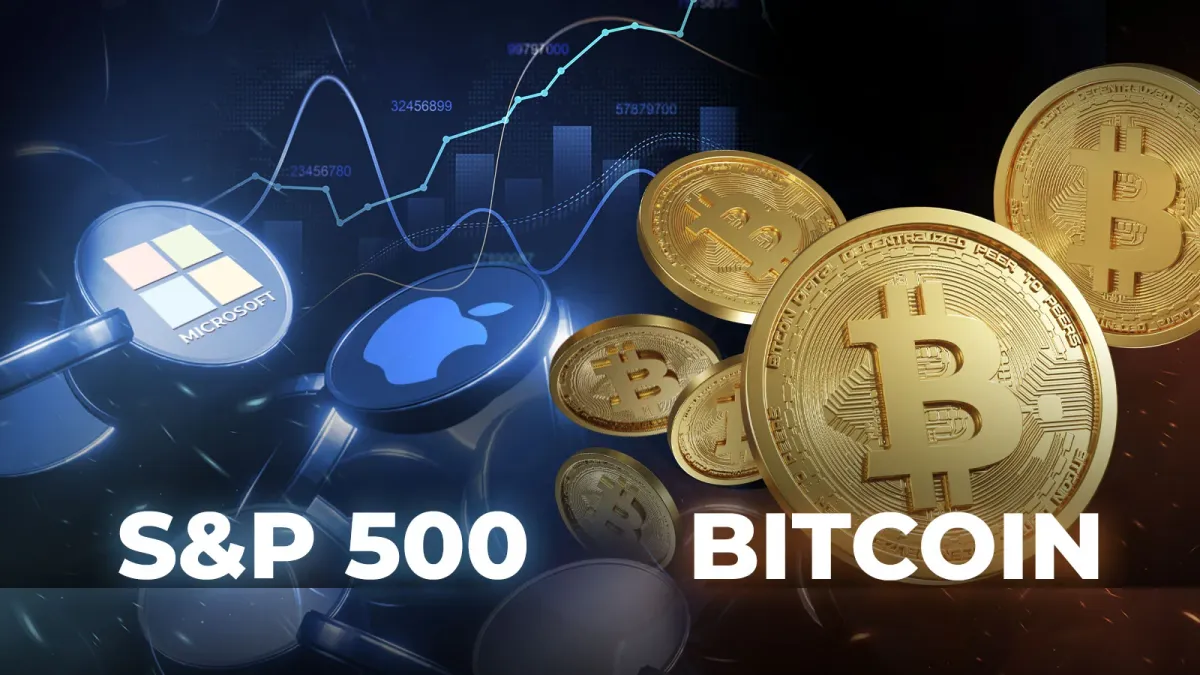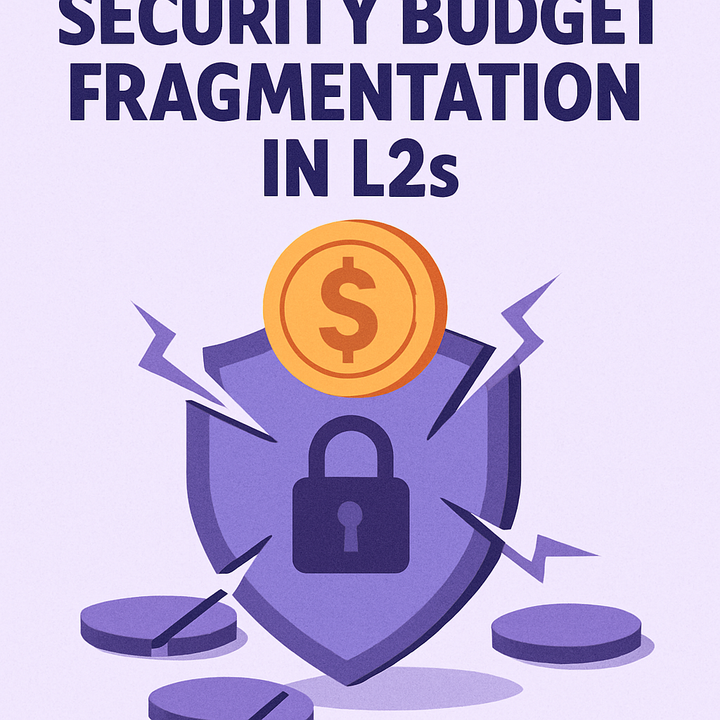S&P 500 hits an all-time high: Is Bitcoin poised to follow?

Introduction
The U.S. stock market is on a tear – the S&P 500 stock index recently notched a fresh all-time high, reflecting surging optimism in traditional markets. For many investors, this breakout in equities signals a broad “risk-on” appetite: economic conditions and corporate earnings appear strong enough to send stocks to record levels. Naturally, the crypto community is asking: will Bitcoin, the largest cryptocurrency, ride the same wave and approach or exceed its own record highs? Bitcoin’s price has historically shown some correlation with stock market trends, especially during periods of abundant liquidity and investor optimism. However, it also marches to the beat of its own drum, driven by crypto-specific factors like network adoption and its programmed supply halvings. To understand whether Bitcoin might follow the S&P 500’s lead, we need to examine both the macro correlations and the unique dynamics of the crypto market.
Stocks vs. Bitcoin: Risk Assets on the Rise
At first glance, Bitcoin and stocks seem quite different. The S&P 500 represents a diversified basket of 500 leading companies across industries – essentially a barometer of the U.S. economy and corporate health. Bitcoin, on the other hand, is a decentralized digital asset often likened to “digital gold” or a speculative currency. Yet, in recent years, analysts have observed that Bitcoin often behaves as a high-octane risk asset, more similar to a tech stock than to a safe-haven asset like gold. When investor confidence is high and money is flowing into tech and growth sectors, Bitcoin tends to climb as well. Conversely, when fear grips the market and stocks sell off, Bitcoin has frequently plummeted alongside them.
Data from the past few years illustrates this relationship. During the bull market in late 2020 and 2021, the S&P 500 was steadily climbing and Bitcoin absolutely skyrocketed (far outpacing stocks, but generally rising in the same periods). In 2022, both markets hit a bear market slump: equities fell due to rate hikes and recession worries, and Bitcoin suffered an even deeper drawdown amid crypto-specific crises. Fast forward to 2023 and 2024, and the tide turned positive again – the S&P regained lost ground and even set new highs, while Bitcoin rebounded dramatically from its lows. One analysis pointed out that in 2024 the S&P 500 gained roughly 20–25% while Bitcoin surged well over 100% in the same timeframe. The direction was aligned (upwards in both cases), even if Bitcoin’s volatility made its swings much larger.
This pattern suggests that investor sentiment broadly affects both asset classes. When there’s faith in economic growth, low interest rates, or plentiful liquidity, people are more willing to put money into riskier bets – be it stocks or crypto. The S&P 500 hitting an all-time high in 2025 is a strong indicator that risk appetite is alive and well. Under such conditions, one could argue Bitcoin is more likely to attract fresh inflows as investors seek higher returns or diversification beyond stocks. Indeed, we’ve seen periods where the correlation between Bitcoin and the S&P 500 spiked significantly (meaning they moved in tandem). For example, in early 2025 analysts noted the 30-day correlation coefficient between BTC and the S&P 500 jumped above 0.4 – the highest in years. While a 0.4 correlation is not extremely tight (1.0 would be perfectly correlated), it does indicate a meaningful positive relationship: when stocks rallied, Bitcoin often did too.
Bitcoin’s Unique Drivers: Halving and Adoption
Correlation aside, Bitcoin is influenced by its own internal cycles and news that don’t impact stocks. Perhaps the most well-known is the Bitcoin “halving” – a programmed event every four years or so where the reward miners receive for mining a new block is cut in half. This effectively slows the supply of new BTC entering the market. Historically, the halving has been a bullish catalyst for Bitcoin’s price. Roughly 12–18 months after each halving, Bitcoin has seen a dramatic bull run (past examples include the 2017 and 2021 rallies following the 2016 and 2020 halvings, respectively). The latest halving occurred in April 2024, reducing the block reward from 6.25 BTC to 3.125 BTC. If history rhymes, late 2024 through 2025 could be a period where Bitcoin experiences a supply squeeze and increased demand, contributing to a price surge. Some crypto analysts argue that regardless of what the stock market does, Bitcoin was already entering a new bull phase due to this built-in supply shock and growing global adoption.
Another driver is the steady march of adoption and infrastructure in the crypto space. 2025 has seen continued interest from institutional investors – from traditional hedge funds dipping into Bitcoin futures, to large asset managers filing for Bitcoin exchange-traded funds (ETFs). Every week seems to bring headlines about a country proposing crypto-friendly regulation or a major payment network expanding digital asset support. This momentum builds an underlying case for Bitcoin’s value that is independent of short-term market sentiment. If, for instance, a Bitcoin ETF gets approved in the U.S., it could unlock a wave of buying from investors who were previously on the sidelines, potentially boosting the price significantly. Such an event would be a crypto-specific catalyst that doesn’t necessarily correlate with the stock market, though it might coincide with a bullish economic backdrop.
It’s also worth noting that Bitcoin’s market is 24/7 and globally driven, responding to things like crypto exchange liquidity, halvings, and even social media trends. The S&P 500, in contrast, is more directly tied to corporate earnings and interest rates set by the Federal Reserve. So while a booming economy (helping stocks) generally provides a tailwind to Bitcoin, Bitcoin can sometimes decouple. For example, if stock indexes are hitting highs but a negative crypto regulatory event occurs (say, a government banning crypto trading somewhere, or a major exchange failure), Bitcoin could temporarily slump even as stocks climb.
Is Bitcoin Ready for a New All-Time High?
As of mid-2025, Bitcoin has already regained much of its value from the previous bear market. It may not yet have surpassed its late 2021 peak (around $69,000), but it has shown a robust uptrend over the past year. Some market commentators have suggested that BTC is consolidating strength and could be “coiling up” for a big move, especially now that the macro environment is favorable and the post-halving cycle is underway. The S&P 500’s all-time high is seen by some as a green light – a confirmation that investors are optimistic and looking for opportunities. With inflation moderate and interest rates potentially stabilizing or falling, liquidity conditions could improve, benefiting asset classes across the board. In such a scenario, Bitcoin might indeed follow the stock market’s lead and break into uncharted territory.
However, prudent analysts also caution that Bitcoin isn’t guaranteed to mirror stocks tick-for-tick. There have been periods when the correlation diminished; for instance, during certain crypto-specific booms (like the DeFi summer of 2020 or the NFT craze of 2021), Bitcoin and crypto surged even when stocks were flat. Conversely, there were moments like early 2022 when Bitcoin dropped harder than stocks due to crypto exchange scandals and leverage unwinding. In other words, Bitcoin’s path to a new all-time high could be accelerated by the bullish stock market sentiment, but it will also depend on avoiding crypto industry pitfalls and continuing to build positive momentum in its own right.
From a big-picture perspective, many long-term investors see both the S&P 500 and Bitcoin as assets that tend to grow over time, albeit with very different risk profiles. The S&P represents steady, compounded growth of established businesses, whereas Bitcoin represents the rise of a new financial paradigm (and carries higher volatility). When one thrives, it often creates conditions for the other to attract attention too. We might also consider the role of diversification: some investors taking profits from soaring stocks could rotate some capital into Bitcoin, viewing it as the next frontier (especially younger investors who are more crypto-savvy). This rotation narrative has happened in previous cycles, where after a massive stock rally, a speculative fervor spills into crypto or vice versa.
Conclusion
With the S&P 500 reaching new heights, the stage appears set for risk-friendly investment strategies – an environment in which Bitcoin historically flourishes. There is a growing sense of optimism in markets, and Bitcoin stands to benefit from this climate if the trend holds. Its inherent scarcity and growing mainstream acceptance provide a strong fundamental case that, combined with bullish sentiment, could propel it toward new price records.
That said, Bitcoin’s journey will likely remain more volatile than that of the stock index. New all-time highs for BTC could come with wild price swings and will depend on continued confidence in the crypto sector. Investors will be watching key milestones (like regulatory approvals, technological upgrades, and adoption metrics) alongside macro indicators.
In the end, asking if Bitcoin is “poised to follow” the S&P 500 might be slightly the wrong framing – Bitcoin often follows, but also leads and sometimes diverges from stocks. Perhaps a better question is: are we entering a period where both stocks and crypto can hit new heights together? Many crypto enthusiasts believe the answer is yes, pointing to 2025 as potentially a breakout year for Bitcoin, fueled by both a flourishing economy and the maturation of the crypto industry. As always, those entering the market should be prepared for twists and turns. But if the bulls continue to run on Wall Street and beyond, don’t be surprised to see Bitcoin attempting to write its own record-book entry in the not-too-distant future.


Comments ()